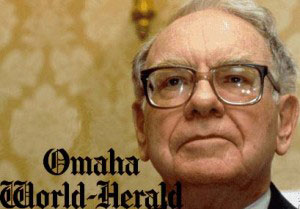The day may come when I discuss the difficulty of covering personal finance or writing small-business stories that are read by more than the copy editor, the business owner and her mother. But it is not this day. Instead, I want to lay out what should be the obvious foundation for all local business coverage yet is often missing. I call it, stealing from my friend Jan Leach, the use of “touchstones.” These are companies, institutions, non-profits, people and economic segments that are most closely identified with, and exert disproportionate power over, a place.
In many cases these are obvious. Think of Bank of America and the financial services sector for Charlotte; Procter & Gamble in Cincinnati; Berkshire Hathaway in Omaha, and Boeing and Microsoft in Seattle. Touchstone companies share certain traits: They are large local employers, often headquartered there, icons closely identified with the city, outfits that draw talent, exert influence and create wealth in large measure. Touchstones aren’t just big companies, but ones that support an entire “ecosystem” of suppliers and spin off talent to start new companies.
Cities without many major headquarters require some creative thinking. For example, Phoenix’s largest private employer is Wal-Mart, but attentive use of wire stories can cover that base except when a corporate issue directly touches the city (such as employees’ disproportionate reliance on state Medicaid). Instead, house-building, real estate and tourism are critical industries that are also touchstones. Even then, there’s Apollo Group, the parent of the University of Phoenix, a pioneer in for-profit education and a target-rich environment as a company facing many challenges. Relatively small Go Daddy is sexy and well-known, while Taser is a subject of ongoing controversy because of debate over the safety of its products.
Government is a major business touchstone in some cases. The Tennessee Valley Authority should be covered as a business and economic player as well as a government entity in its hometown of Knoxville. In Lawton, Okla., Fort Sill is not just the artillery school of the Free World, but also the most important economic driver. Tucson is especially dependent on defense spending for contractors and Davis-Monthan Air Force Base, as well as the University of Arizona. No doubt these entities are reported on, but they should also be covered with the expertise of business journalists. This will require negotiation with the city desk, but someone should be covering employment, contracts, vendors, etc.
Once touchstones are identified, how to cover them? First, learn everything you can about the company, including its local employment, history, culture, financials and top executives. Who are its big competitors and its major competitive challenges? Bloomberg, Yahoo Finance, SEC documents and proxies are places to start. Get to know the business professors who study these firms or sectors (and if they are somehow on their payroll). Sites such as Open Secrets are great for finding out how they throw around their money on lobbying. Read what others have written and make a note of their sources. Get to know the public relations staff and leverage this for interviews with key executives. Create a Google Reader filter to pick up everything that comes out about the corporation or industry. Set up a beat map. Learn everything about how the business works and is evolving. Be skeptical.
Report and write as a curious expert, but always neutral. Neither an apologist, press-release handler nor crusader. Done right, the stories will speak for themselves.
A few touchstone stories are essential: Earnings reports (and check out Craig Silverman’s primer on this topic); a yearly Q&A-style interview with the chief executive; an annual overview of how the company is performing and its competitive issues going forward, and picking the high-impact stories to cover (as opposed to routine stuff that can be covered by wires, briefed or ignored). Lobby to attend the leading trade show involving this sector; it’s a great place to find sources. Pick enterprise stories that will soon spring from your growing knowledge — and some can be 15-inch dailies, but they are exclusive, anticipating the news rather than reacting to it. A touchstone company or industry should be in the paper at least once a week, with the story explaining (in a non-pedantic way) why this company matters.
People can be business touchstones, too. Bill Gates and Paul Allen fit that description in Seattle, having a large effect on the world, in the case of the former, and city, especially in the case of the latter, even though both are gone from Microsoft. Charismatic, pioneering and controversial business leaders are potential touchstones. Access is everything for a reporter, but don’t be put off. In the age of streaming speeches from Davos and earnings conference calls, even the most elusive CEO can be pinned down.
Almost any global issue can be applied to a local touchstone. How is it responding to climate change? How are its employees treated in a time of stagnant wages and income inequality? How is it using its influence to game policy (e.g. the Koch brothers). With growth slow, is it one of the big winners sitting on plenty of cash or is it struggling because of new competitors and mature markets? Is it an export powerhouse — and if so what pressures is it feeling to outsource and what are its employment practices in other nations?
Mastering touchstones can make you and your news organization the (or at least a) “go-to” site for readers around the world. The coverage doesn’t have to be encyclopedic; that can never be achieved for the biggest firms. But if it’s exclusive, compelling and brings the knowledge of boots-on-the-ground in the hometown, it brings eyeballs.
How many touchstones? It’s a tough question in an era of layoffs and rising workloads. Maybe five for a mid-sized newspaper. Maybe two for an ambitious reporter. Touchstones aren’t the only things that should inform your coverage. But they are the must-have upon which all else is built.











